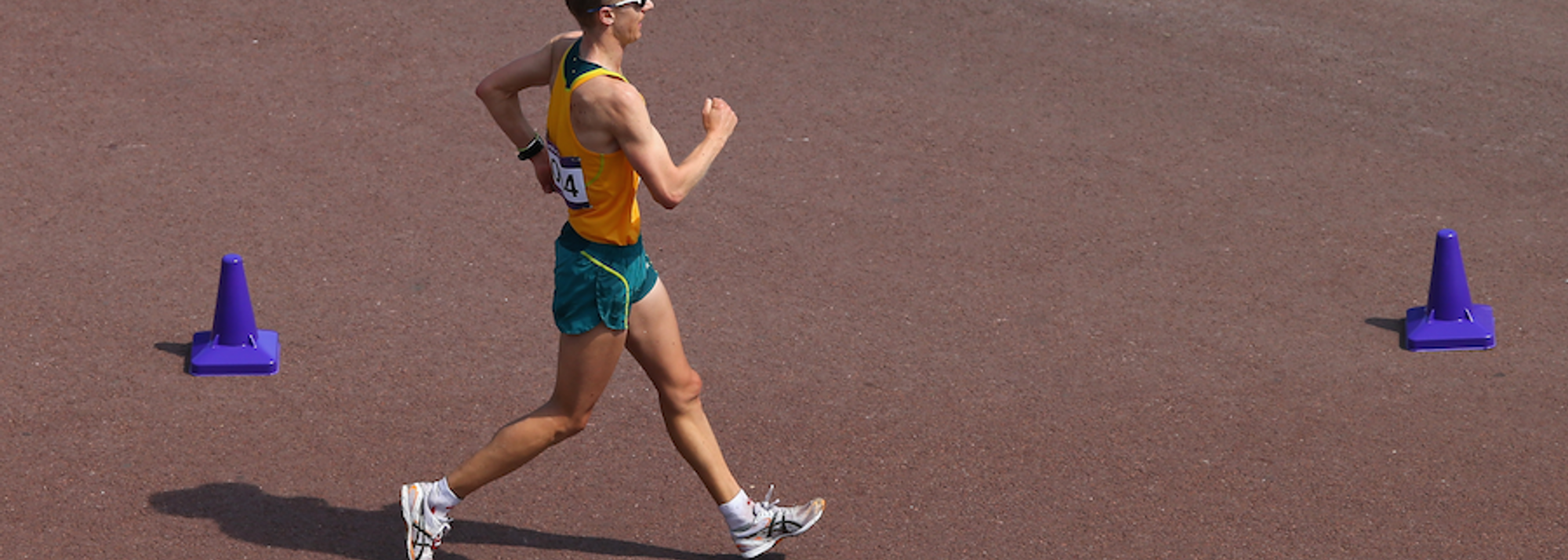Altitude House SPIKES
Since 2006 the Australian Institute of Sport in Canberra has boasted a purpose-built five bedroom “altitude house”, complete with kitchen, bathroom and sunny garden aspect. The house has been used as a training aid by a number of Australia's leading athletes including three-time Olympic race walking medallist Jared Tallent. Australian Institute of Sport and University of Canberra exercise physiologist Dr Laura Garvican-Lewis tells us what it’s all about.
How can the house be made to simulate being at altitude?
Dr Laura Garvican-Lewis: Nitrogen gas is pumped into the house to replace the oxygen in the air with a 24/7 supply. This runs constantly, so the air does not become stale which minimises the build up of carbon dioxide.
Canberra is at a slight altitude (around 600m), so because of this we don't have to reduce oxygen levels quite a much as we would for a sea level venue. An oxygen percentage of 15.6 simulates a height of 3000m in Canberra. Normally oxygen levels are usually at about 21 per cent.
Why is the house set to simulate 3000m altitude?
LGL: A lot of research has been done to look at the optimal height of living at altitude and the model we have used is to ‘live high, train low.’ We have found being able to live and sleep at 3000m altitude is the best level to stimulate the increases in red blood cells and changes in our muscle without any detrimental effects to the body in terms of muscle wastage or body mass.
All training is performed outside in the normal training environment so that quality can be maintained. We believe that living at altitude but training low gives the body the adaptations needed to compensate for living in that environment but with the added advantages of training at sea level. This is quite different from travelling to an altitude venue and then having to train at altitude as well. It is also important to know that greater height isn't always better. With altitude there is a height above which there will be diminishing returns.
Top Aussie race walker Jared Tallent is a big fan
In your opinion, is living in the altitude house of greater benefit than living and training at higher altitude?
LGL: There are benefits in both. The altitude house allows us to bring the mountains to Canberra, so athletes can still be close to their families and have that support network around them without having to travel to an altitude venue. Their training also isn't really compromised.
When you are training at altitude it is much tougher to do the really high intensity training, so the consequence is you have to back off or need longer to recover. That is not to say there are not benefits in training at high altitude venues, particularly earlier in the season. What we've found is that the live high, train low model works better closer to competition.
Which athletes gain most from the altitude house?
LGL: Traditionally endurance athletes, although more recently some of the shorter distances athletes like the 400m hurdlers and 400m sprinters have experimented with the house and may benefit as well.
What is it like to live in the house?
LGL: It can take a few days for athletes to adapt and it may initially take a little longer to recover from sessions. They are essentially still “training” even at rest. Sleep can also be a little bit broken, but after about a week an athlete usually adapts. The appetite can increase and some people might experience a slight headache which is often due to slight dehydration. This is not, however, anything like the high-altitude sickness experienced by mountaineers.
How long should an athlete live in the house?
LGL: We recommend an ideal block of around 300 hours in the altitude house – at around 14 hours per day over a three-week period. With around eight hours sleep and breakfast this is not too hard to achieve, it just often means the athletes are rarely out at night with little possibility of socialising.
Some athletes might aim for four weeks in the house, but we find any longer than that and there begins to be little additional benefit physiologically.
Top bunk altitude: 3002m
What are the main benefits of being in the house?
LGL: The response to the production of red blood cells is the easiest thing to measure, but there are other responses not directly related to blood in terms of how the body copes with lactic acid and how efficiently the muscle works.
On average we see a one per cent increase in the amount of red blood cells created every 100 hours in the house. However, that is the average. Some people don't respond at all while others might increase by about seven per cent – which is a massive difference.
How long does the red blood cell increase stay in the system?
LGL: There tends to be a drop off three to four weeks after leaving the house, but what is really interesting is the best performances by an athlete often come six weeks after being in the house.
What we now know now is after training in the house those extra red blood cells will help an athlete reach a higher level in training, but the rewards may not necessarily come straight away or be directly related. It might just help an athlete along the way.




